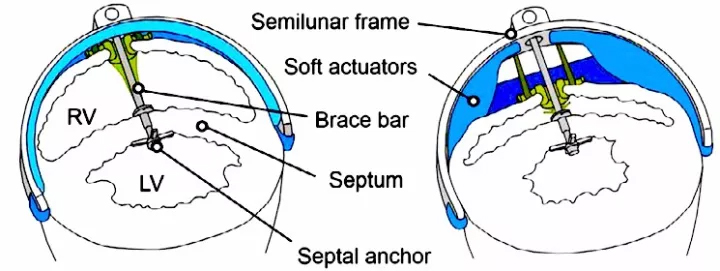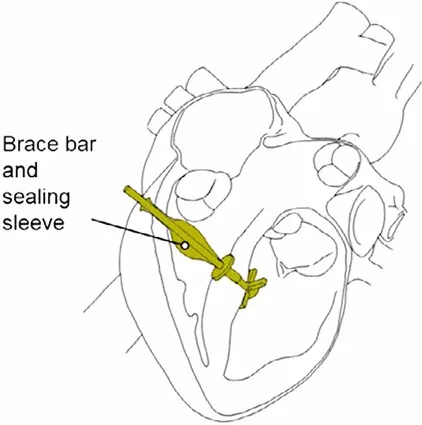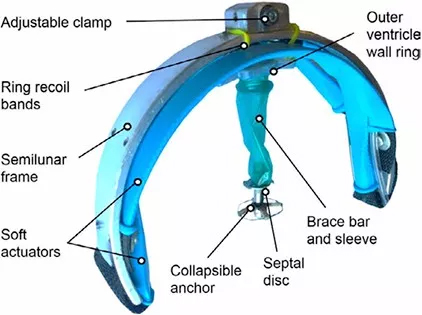Provide a "half-heart" solution for unilateral heart failure
Heart failure can cause irreversible damage to the body and is even life-threatening. Previously, scientists have invented a soft silicone sleeve that wraps around the heart to provide power to the heart.
But what about unilateral heart failure, is there only enough blood in one ventricle?
This type of heart failure is more common in some pediatric patients, and congenital diseases can cause right ventricular or left ventricular failure, but not both. In this case, squeezing the entire heart actually interferes with the pumping of the healthy ventricle. To solve this problem, researchers from Boston Children's Hospital invented a new device that targets only one ventricle and is designed to provide power assistance for unilateral heart failure.

Schematic diagram of the device to help blood supply Source: Boston Children's Hospital
This new robotic heart assist device provides gentle and powerful pumping assistance to one side of the heart without disturbing activity on the other side.
Nikolay Vasilyev, a researcher who participated in the study, said: "We combine rigid stents with soft robotic brakes to gently and forcefully help an unhealthy heart chamber pump." Rigid stents are implanted in the interventricular septum, affecting the ventricles The soft actuator on the surface provides resistance.

Mounting the stent to the intraventricular septum through minimally invasive surgery Source: Boston Children's Hospital
As the brakes expand, they push against the ventricular wall, pulling the stent of the septum, causing compression in the ventricular lumen without affecting the other side of the heart. Vasilyev said: "When the brakes are relaxed, a specially designed elastic band can help restore the wall of the heart to its original position, filling the heart with blood."
“Using traditional left ventricular assist devices, some patients experience a shift to the right septum, followed by a right ventricular swell, resulting in secondary right heart failure.†Vasilyev said: “Here, the rigid stent keeps the diaphragm in place. The original position protects the right side of the heart from the left, away from the left ventricular assisted mechanical load."

Structure description of the auxiliary device Photo source: Boston Children's Hospital
In minimally invasive cardiac assist devices, soft mechanical devices have great potential for application, which can help heart failure by squeezing the heart from the outside. Unlike traditional ventricular assist devices, this method does not require significant exposure of the device to the blood, reducing the risk of thrombosis and the need for anticoagulant therapy. This advantage is especially important for pediatric patients. The team tested the device in an animal model, significantly improving the blood spurting capacity of the diseased ventricle. The team is now working to improve the device to make it more suitable for human patients.
Reference material
[1] A “half-hearted†solution to one-sidedheart failure
[2] Soft Robotic Cardiac Assist Device forOne-sided Heart Failure
Source: Health New Vision (Micro Signal HealthHorizon)
Dried Fruit,Freeze Dried Strawberries,Dehydrated Fruit,Dried Goji Berries
Xi'an Gawen Biotechnology Co., Ltd , https://www.seoagolyn.com